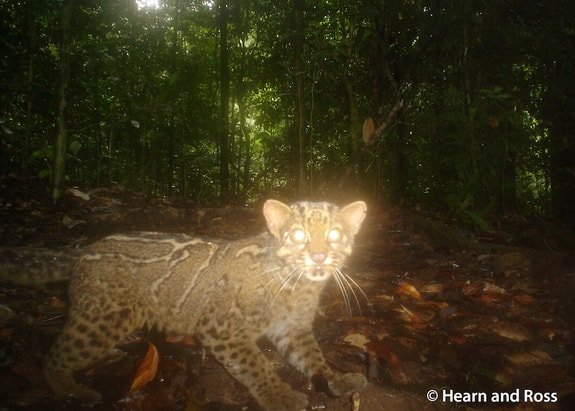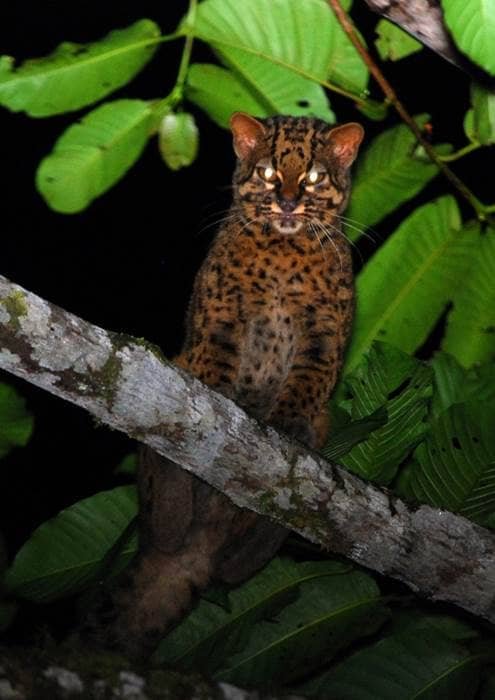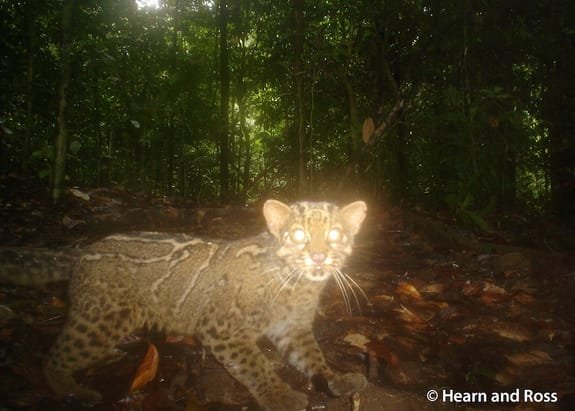
Marbled cats (Pardofelis marmorata) are extremely elusive and reclusive creatures. To get a better idea of the cats’ stomping grounds, the researchers placed camera traps within eight forests and two palm oil plantations in Sabah, Malaysian Borneo, they said.
After just four months of secret, motion-triggered infrared photography, the researchers found that marbled cats are most numerous in the lowlands where the forest is basically undisturbed. However, they did find a some cats in selectively logged areas. [See Camera Trap Photos of the Elusive Marbled Cat]
“We show that marbled cats can still survive in logged forests,” said study lead researcher Andrew Hearn, a doctoral candidate at the Wildlife Conservation Research Unit at the University of Oxford in the United Kingdom. “This lends further weight to the argument that such disturbed forests are important to the conservation of biodiversity and should be preserved wherever possible.”
Little is known about these cats, which are named for their marble-patterned fur. They live in dense tropical forests, and they are rarely seen, except for the odd camera-trap sighting. Perhaps that’s because the species is currently listed as “near threatened,” according to the International Union for Conservation of Nature’s (IUCN) red list, largely due to habitat loss and poaching.
In the new study, the researchers used the surreptitiously taken photographs to identify individual cats and estimate the species’ population density and distribution. They found that the lowland Danum Valley Conservation Area had just about 19.5 cats per 39 square miles (100 square kilometers). Tawau Hills Park had fewer — about seven of the cats per 39 square miles. The Tabin Wildlife Reserve, which was selectively logged from 1969 to 1989, had an estimated density of just about 10 cats per 39 square miles.
These estimates provide “tentative evidence” that undisturbed, lowland hill forests have the very highest densities of marbled cats, Hearn said. Other areas, including disturbed lowlands and undisturbed highlands, had much lower densities of the cats, he said.
The camera traps didn’t record any marbled-cat sightings within the plantations, although just one cat was spotted walking along the forest-plantation boundary, the researchers added. They also photographed cubs in the Tabin North, Tawau and Ulu Segama forests.
The results of this exhaustive study suggest plainly that the marbled-cat population may be somewhat higher in northern Borneo than it is elsewhere, but more studies will be needed to verify this, Hearn said. For instance, researchers could use camera traps in other places in which the cats are found in the Indomalayan ecorealm, which is a region extending from eastern India and Nepal to Yunnan province, China; and throughout mainland Southeast Asia to the islands of Sumatra and Borneo. [Photos: In Images: The Rare Bay Cat of Borneo]
However, enforced regulations could increase the number of Borneo’s marbled cats even a bit more. Although poaching is illegal, the researchers discovered used shotgun cartridges in seven of the eight forests. However, they didn’t come across any evidence that poachers are shooting at the marbled cats, the scientists wrote in the study.
Laws governing logging and forest conservation might just help preserve the population of marbled cats, Hearn said.
“We provide further evidence that logged forest may still be used by these cats, and should be preserved,” he said.
The new study was published online yesterday (March 24) in the journal PLOS ONE.

















